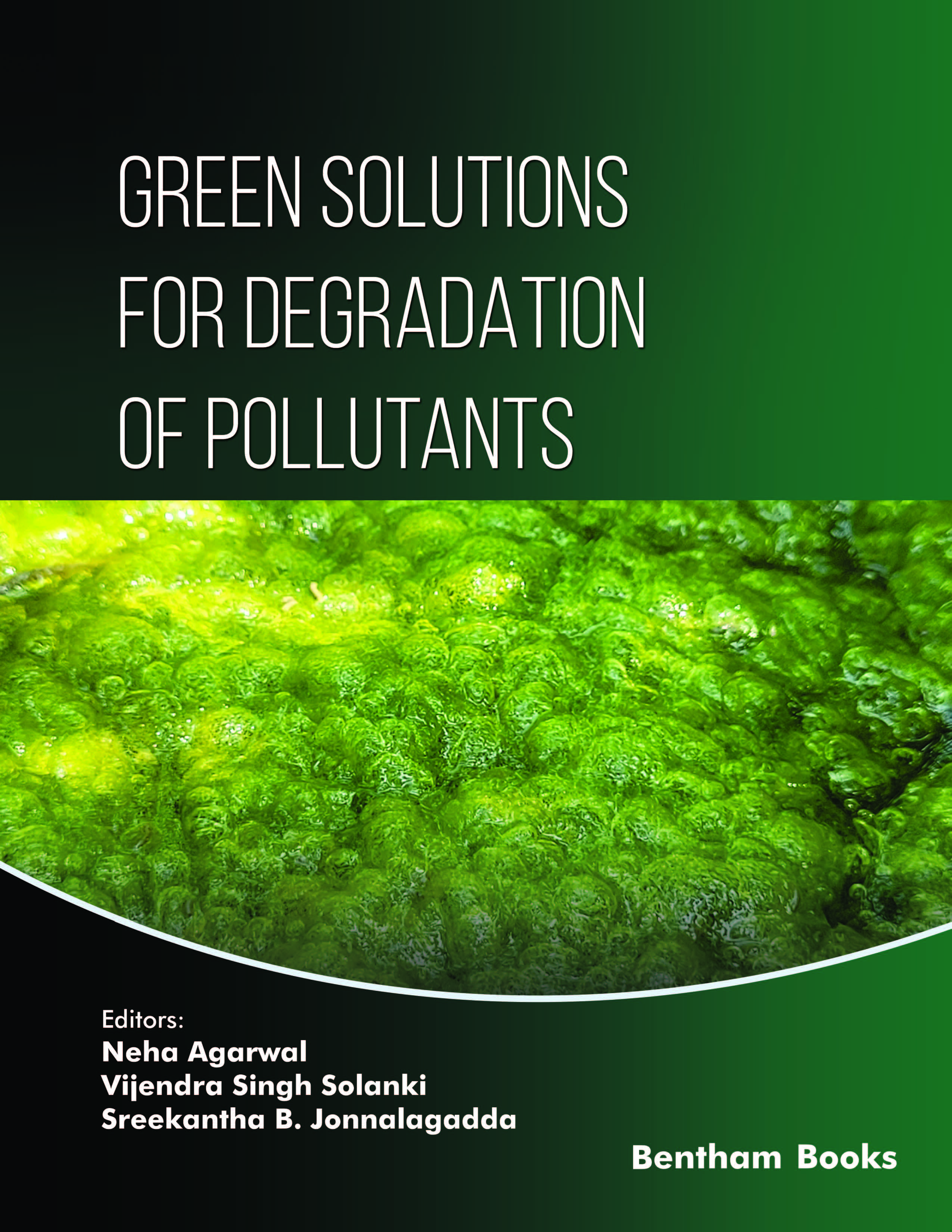The rapid industrialization, urbanization and technological advancement have generated various contaminants on a global level. The presence of these contaminants in different environmental matrices, either from natural or anthropogenic activities, represents a threat to the natural environment and living entities. Therefore, much control and research are required to eradicate and minimize the negative impacts of these pollutants from the contaminated environment. Though conventional treatment approaches and advanced techniques are effective in the removal of pollutants from the environment, these techniques are highly expensive, energy consuming and non-environment friendly in nature. In this view, there is a need for eco-friendly and sustainable solutions with minimal negative post-environmental impact.
The book “Green Solutions for Degradation of Pollutants” is a compilation of chapters on environment friendly techniques of remediation of pollutants. Green solutions are basically a collection of techniques and practices that are based on the generation of non-toxic end products, renewable energy sources and other factors that mitigate the negative impacts caused by human activities. The book will be highly useful for students, researchers, environmentalists, academicians, environmental microbiologists, life sciences and nanosciences experts, waste treatment industries, and for a well-read audience. It will also serve as a learning resource for researchers and students in environmental science, microbiology, nanotechnology, freshwater ecology, and microbial biotechnology.
Agarwal et al., in chapter one, have discussed the transport fate and accumulation of emerging environmental pollutants and critically assessed their toxic impacts on the environment and living beings. They have also highlighted the possible solutions that could be used to remove these contaminants in a sustainable manner.
Amrit Mitra, in chapter two, has given a comprehensive description of microbial potential for biodegradation of organic pollutants, their removal mechanisms, and distribution of pollutants in environmental matrices, biodegradation pathways and the efficacy of biodegradation for complete mineralization.
Shankar et al., in chapter three, have given an overview of the green synthesis of metal nanoparticles using plant extracts, the pollutants degradation mechanism, and their environmental and biological applications in detail.
Amrit Mitra, in chapter four, has given a detailed account of the current advancements in green bioremediation methods, how various contaminants are broken down by microorganisms and what the future holds for bioremediation in terms of lowering global pollution levels.
Mishra et al., in chapter five, have thrown light on carbon dots as a new group of zero-dimensional luminescent nanomaterials, their synthesis, classification, properties and applications in environmental pollution control and environmental protection measures.
Kumar et al., in chapter six, have given a detailed account of green synthesis of nanoparticles using plant extracts and multiple applications of these nanoparticles in environmental remediation along with their biological applications. They have also discussed why green synthesis is more advantageous than classical chemical synthesis.
Saivenkatesh et al., in chapter seven, have discussed the nanoparticles synthesized by microalgae, their characterization methods, and their multiple applications with a special focus on environmental remediation. They have also highlighted the challenges involved in using microalgae-derived NPs along with their future perspectives.
Shahi et al., in chapter eight, have summarized the green synthesis methods of various nanomaterials, their remediation methodology, mechanism of action, and prospective applications in environmental remediation. Additionally, they have also highlighted the efficient removal and valorization of waste materials using nanobioremediation.
Kumar et al., in chapter nine, have talked about the remediation of heavy metal-contaminated soil using phytoremediation as a sustainable approach. According to them, modern phytoremediation methods may be used for large-scale decontamination of contaminated soil in a sustainable manner.
Bais et al., in chapter ten, have given a detailed discussion on the immense potential of nanomaterials in the bioremediation of polluted water. They have given a comprehensive comparison of nanobioremediation with other conventional bioremediation methods to make water environmentally non-hazardous.
Srivastava et al., in chapter eleven, have addressed the biogenic and green synthesis of palladium nanoparticles to remove different types of pollutants from wastewater.
Jangid et al., in chapter twelve, have given a comprehensive review of different domains of nanotechnology in the treatment of wastewater and also thoroughly covered various fundamental aspects of nanotechnology such as types, synthesis, applications and future directions for a green and sustainable environment.
Manoj Kumar et al., in chapter thirteen, have given a comprehensive overview of eco-friendly initiatives, methods and preventive measures to remove microplastic and nanoplastics from the global environment. They have also underlined the potential of green nanomaterials to solve the growing problem of plastic pollution and emphasized the importance of sustainable and environmentally friendly solutions.
Neha Agarwal
Department of Chemistry
Navyug Kanya Mahavidyalaya
University of Lucknow
Lucknow, India
Vijendra Singh Solanki
Department of Chemistry
Institute of Science and Research
IPS Academy
Indore, India
&
Sreekantha B. Jonnalagadda
School of Chemistry and Physics
University of KwaZulu-Natal, Westville Campus
Durban, South Africa

